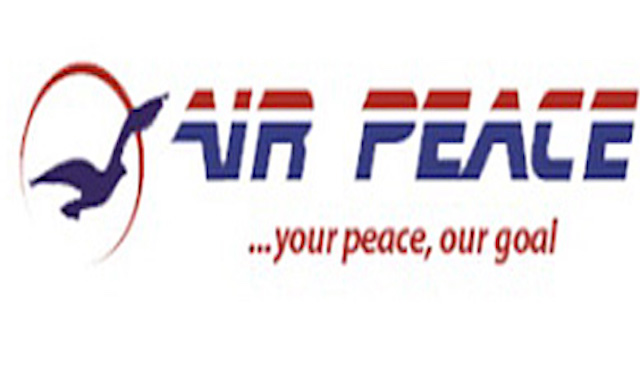General News
HP Unveils High- performance Workstation Desktop

HP Inc. announced its new Z by HP high-performance workstation desktop lineup, engineered to change what is possible within complex, data rich workflows.

HP is advancing hybrid workforce management with the HP Anyware Remote System Controller, a device that gives IT departments the management capabilities to support high performance devices from anywhere.
The complex workflows in industries spanning media and entertainment, data science, and engineering mean increased time pressure and the need for more compute power to deliver faster results.
They also highlight a need to iterate with remote teams and push creative boundaries to deliver more accurate results. The new Z by HP Z4, Z6, Z8, and Z8 Fury desktops, powered by Intel®, deliver the scalable balance of CPU and GPU compute needed to fuel new levels of speed, accuracy, and creativity.
“Z by HP is dedicated to delivering the best possible computing experience to fuel new levels of speed, accuracy, and creativity,” said Jim Nottingham, Vice President and General Manager, Z by HP. “HP’s design engineering, together with the power of Intel and NVIDIA, provide the performance, scalability, and security our customers require to meet their evolving needs.”
“Intel® and Z by HP represent the future of high-performance workstation computing,” said Roger Chandler, Vice President and General Manager, Intel. “With Intel® Xeon® W, users can expect breakthrough performance, advanced security features, and the scalability they need to tackle the most demanding workloads.”
Z by HP innovations start with the customer to deliver the performance benefits needed whether it’s importing and working with large models and assemblies, running complex simulations, or training complex deep learning and machine learning models faster.
The latest Z workstation desktops include up to 56 CPU cores and four high-end GPUs in the Z8 Fury G5. The Z4, Z6, Z8, and our all-new Z8 Fury, provide a variety of configurations to meet every workflow challenge for each of these segments. From our best-selling workhorse, the Z4, to the extreme performance of the Z8 Fury, Z by HP has the right workstation for every workflow.
The Z8 Fury G5 delivers powerful performance while staying cool and quiet under high-performance workflows with up to 56 cores in a single CPU and unleashing the power of four high-end double-wide GPUs with 2TB of DDR5 memory due to transformative single socket technology. Now you can breeze through even the most complex deep learning, virtual production, and VFX.
The HP Z4 G5 tackles advanced workflows from machine learning to advanced video editing with an evolutionary advancement of up to a 24-core CPU, two high-end GPUs, up to 512GB of RAM. The Z4 G5 accelerates a wide range of professional apps to advance intensive workflows and provides plenty of room to expand as workflows evolves.
The HP Z6 G5 accelerates graphics-intensive workflows with multiple GPUs based on the increased PCIe expandability of the latest Intel® Xeon® W-3400 processor architecture.
With up to 36 processing cores, three high-end graphics cards, and 1TB of DDR5 memory, the Z6 G5 delivers significant performance for users demanding a machine that scales with their increased model and dataset complexity.
The HP Z8 G5 is designed for users who demand the most processing compute for CPU-intensive workflows to accelerate rendering with real-time ray tracing, data visualization, and model training while also providing plenty of room to expand as demands change.
With a dual-socket workstation, designed to utilize 4th Gen Intel Xeon, it delivers up to 64 system cores in addition to supporting 2x high-end graphics cards with 1TB of DDR5 memory.
The HP Anyware Remote System Controller provides IT administrators a single dashboard with the ability to launch a kernel-based virtual machine (KVM) session and perform out-out-of-band management tasks such as pre-boot access, BIOS updates and re-imaging from anywhere.
Through a single interface, IT administrators can now manage a fleet of devices, access secure system information like model numbers and BIOS versions, receive reports, and develop insights, to optimize their infrastructure to resolve issues before they affect users.
HP is designing this hardware and software based on strong security industry standards, completing extensive testing, third-party reviews, and certifications to ensure maximum security.
General News
NCAA Orders Airlines to Enforce $10,000 Currency Declaration Rule

The Nigeria Civil Aviation Authority has ordered all international airlines flying into Nigeria to enforce the $10,000 currency declaration rule.

The authority said the rule is required for passengers to declare cash or negotiable instruments above the limit, as part of efforts to strengthen anti-money laundering compliance.
According to the NCAA, the directive, referenced as NCAA/CPD/ABV/298, dated 24 April 2025 seeks to address gaps in the enforcement of existing currency declaration obligations for inbound passengers.
This was announced in a statement issued by the Director of Public Affairs and Consumer Protection, Michael Achimugu, via his official X account on Tuesday.
“International carriers must take two key actions, which include “Make inflight or pre-landing announcements informing passengers of their legal obligation to declare any currency or Bearer Negotiable Instruments exceeding $10,000 USD or its equivalent upon arrival in Nigeria.
“Distribute currency declaration forms onboard for passengers to complete before landing. The NCAA has received reports indicating that some airlines are yet to comply with this directive”, the statement read.
The NCAA said these requirements are consistent with international best practices and are vital to preventing the illegal movement of large sums of money across borders.
The Authority warned that full cooperation from international airlines is essential, saying, “Please note that the cooperation of all international airlines operating in Nigeria is critical to supporting the country’s efforts to align with global financial standards.”
Accordingly, the authority emphasised that full implementation of this directive, particularly as it concerns inbound passenger declarations, is of utmost importance.
“Compliance will be closely monitored, and non-compliant airlines will face appropriate sanctions,” it added.
General News
Appeal Court Nullifies Registration of ‘KPMG Professional Services’

The court of appeal in Lagos has asked the Corporate Affairs Commission (CAC) to revoke the certificate of registration of “KPMG Professional Services”.

In a unanimous decision delivered on Thursday, the appellant court granted the reliefs sought by KPMG Nigeria against CAC and KPMG Professional Services.
The judgment was read by Abdullahi Mahmud Bayero, the judge.
The two other judges are Abimbola Obaseki-Adejumo and A.M. Talba.
In 2002, KPMG Professional Services was registered as a company with CAC despite the existence of KPMG Nigeria, comprising its audit, tax, and consulting arms.
The KPMG Nigeria has long been registered in Nigeria before 2002.
KPMG Audit was registered in 1969, KPMG Tax Consultants in 1990, and KPMG Consulting in 1969.
Displeased with the registration of KPMG Professional Services, KPMG Nigeria approached the federal high court.
The consulting firm had argued that the name “KPMG Professional Services” was deceptively similar to its long-established identity.
In 2005, the lower court dismissed KPMG Nigeria’s case, citing an alleged merger between KPMG Nigeria and Akintola Williams Deloitte as reason the company could no longer assert rights to the name.
The lower upheld the second respondent’s (KPMG Professional Services) counterclaim and ordered that KPMG Nigeria’s name be struck off the CAC register.
The lower court had premised its decision on newspaper articles stating that KPMG Nigeria reportedly merged with Akintola Williams Deloitte.
Delivering the judgment, Bayero ruled that the lower court erred by relying on newspaper articles to ascertain that KPMG Nigeria allegedly merged with another company.
The judge said the documents showing the alleged merger were not presented before the lower court, and the form of the alleged merger could not have been known.
“In any event, the only branch of KPMG, if any, that entered into a merger with Akintola Williams as stated in the newspaper articles 18, is KPMG Audit,” the judge ruled.
“The other spheres were totally unaffected. It would therefore be wrong to state that the merger (which has not been shown to this Court) of KPMG Audit with Akintola Williams means all the other areas of business, including KPMG Consulting and KPMG Tax Consultants, also ceased to exist.
“Even if the Appellants (KPMG Nigeria) had ceased to do business as the Court seemed to have held, the 2nd Respondents (KPMG Professional Services) should not have been carrying on business until the Appellant’s certificate of registration is withdrawn or set aside.
“They cannot use the name until the Appellant’s certification of registration is withdrawn or set aside. They cannot use the name until the name is removed from the 1st Respondent’s (CAC) Register of Names.
“The 1st Respondents can only assign the name to the 2nd Respondents after first taking it away from the Appellants.”
The court ruled that CAC erred by registering KPMG Professional Services despite the existence of a business name, which is already registered.
The judge reversed the earlier ruling of the lower court and reaffirmed the primacy of statutory protection for existing business names under Nigerian corporate law.
General News
Air Peace Launches Abuja–London Heathrow, Gatwick flights October 26

Air Peace has announced the launch of direct flights from Abuja to London Heathrow and Gatwick airports, with operations scheduled to begin on October 26, 2025.

The airline said in a statement on Sunday that round-trip fares for the Abuja–London service will start from N1m, making it the first Nigerian carrier to offer direct connections from the capital to both of London’s major international airports. This was contained in a press release issued on Sunday by the airline’s spokesperson, Efe Osifo-Whiskey.
“Direct international flight services from Abuja to both London Heathrow and London Gatwick Airports, effective October 26, 2025.
“Air Peace becomes the first Nigerian carrier to offer direct services from Abuja to both of London’s major international airports, further solidifying its role as a leader in regional and intercontinental aviation.
“Travellers originating from any of Air Peace’s domestic destinations across Nigeria can now book through fares via Abuja to either Heathrow or Gatwick using a single ticket, eliminating the need for multiple bookings or baggage re-checks,” the statement read.
Similarly, the new route opens convenient access for inbound passengers from the UK to cities across Nigeria.
“Travellers from London can access multiple destinations across Nigeria using a single Air Peace ticket through Abuja every morning. These destinations are Lagos, Port Harcourt, Enugu, Benin, Warri, Owerri, Kano, Yola, Gombe and Asaba, for now. Other destinations will be added later,” Osifo-Whiskey stated.
Air Peace is also offering what it describes as unprecedented value in pricing and service.
Osifo-Whiskey said, “It provides a distinct competitive advantage, enabling passengers to travel between Nigeria and the United Kingdom with greater ease, efficiency, and value, due to the possibility of choosing multiple cities entry and exit points.
“Has the cheapest fares ever, starting from only 1 Million Naira round trip. Huge baggage allowance.”
The Abuja–London launch comes months after the airline began Lagos–London Heathrow flights, which started earlier in 2024.

 E-Financial3 days ago
E-Financial3 days agoUBA’s LEO Becomes Africa’s First Chatbot to Enable Cross-Border Payments

 News3 days ago
News3 days agoUN Appoints Sa’id, Nigerian to Nuclear Panel

 E-Business3 days ago
E-Business3 days agoNIMC Enrolls 122m for NIN, Cuts Extortion by 40 Percent

 Telecom2 days ago
Telecom2 days agoMTN Nigeria Rewards 1,500+ Winners with ₦290m in Mega Billion Promo

 Telecom3 days ago
Telecom3 days agoMTN Urges Nigerian to Regards Telecom Infrastructure as National Assets

 General News3 days ago
General News3 days agoAppeal Court Nullifies Registration of ‘KPMG Professional Services’

 E-Financial2 days ago
E-Financial2 days agoNaira Slides Again, Hits ₦1,532.34/$ Despite CBN’s Dollar Push

 Telecom3 days ago
Telecom3 days agoBitget Launches $6M Global Crypto Trading Contest with New Competitive Segments


























